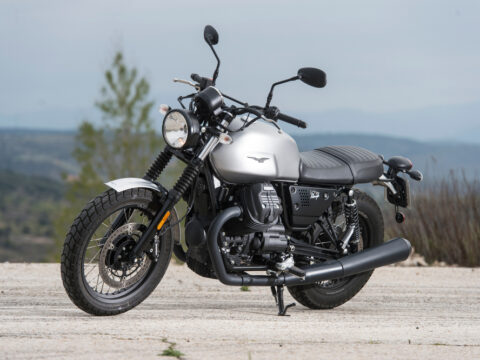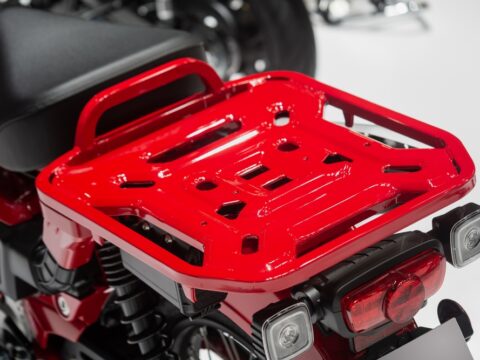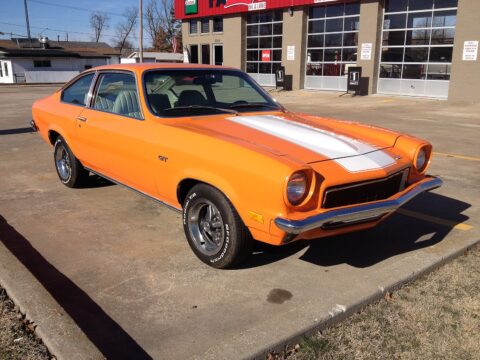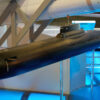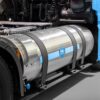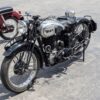Keeping your motorcycle in top shape doesn’t have to be complicated or costly. With a few basic tools and a little know-how, there are plenty of maintenance tasks you can easily handle at home. Regular upkeep not only extends the life of your bike but also ensures a safer and smoother ride. Here are 17 simple motorcycle maintenance tasks you can do yourself to keep your bike running at its best.
Contents
Checking and Changing Engine Oil
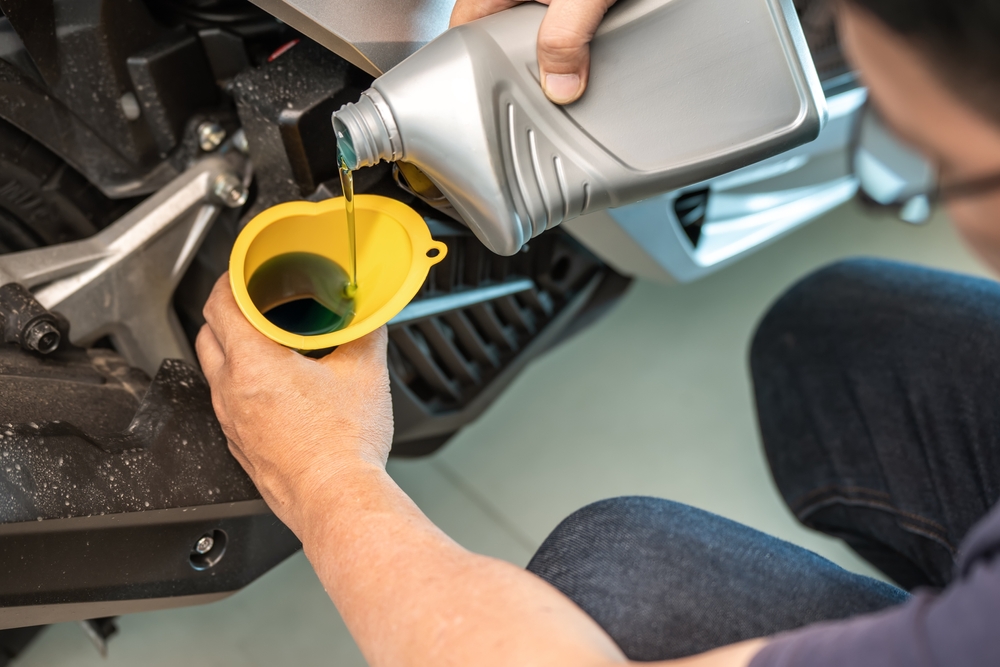
Regular oil changes are essential for keeping your engine in good health. Fresh oil lubricates moving parts, reducing friction and preventing overheating. Changing your oil every 3,000-5,000 miles is a simple task that you can do with basic tools. Neglecting this can lead to increased wear, so it’s a critical part of maintenance. Make sure to use the manufacturer-recommended oil to keep your engine running smoothly.
Cleaning and Lubricating the Chain
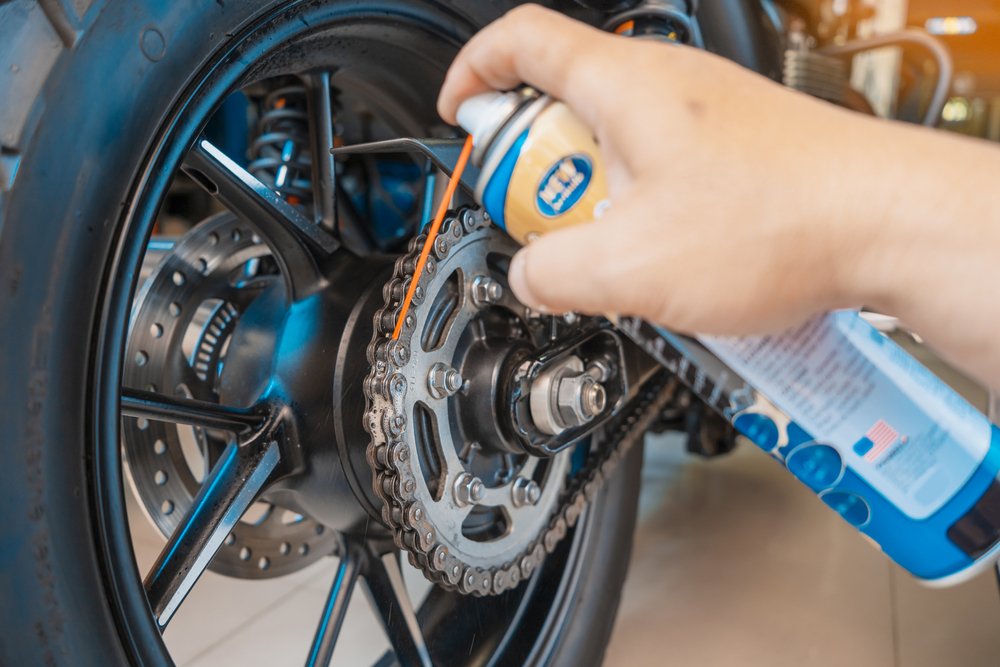
A clean, well-lubricated chain ensures your motorcycle runs smoothly and efficiently. Over time, dirt and grime accumulate, causing wear and reducing the chain’s lifespan. Regularly cleaning and applying lubricant every 300-600 miles can prevent rust and keep your bike performing at its best. It’s a quick task that requires minimal effort but offers long-term benefits. Ensuring the chain is properly lubricated also prevents excessive wear on the sprockets.
Checking Tire Pressure
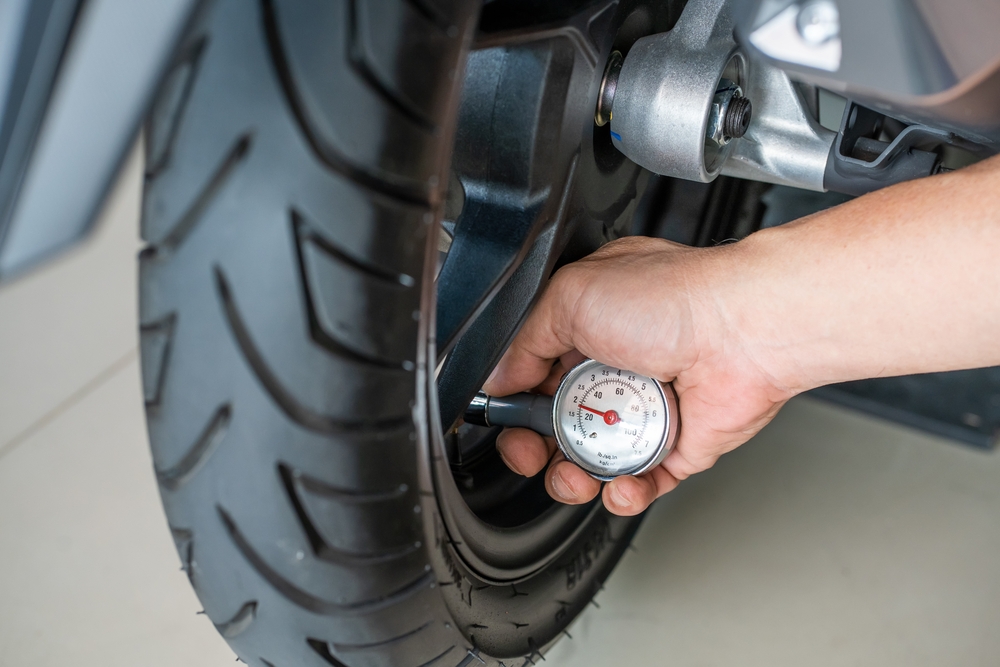
Proper tire pressure plays a significant role in handling, fuel efficiency, and safety. Underinflated tires can cause poor traction and increased wear, while overinflated ones reduce your contact with the road. Using a tire pressure gauge to check levels before each ride is a simple way to avoid unnecessary risks. Adjust the pressure according to the manufacturer’s specifications for the best results. This quick check can also prevent blowouts and improve ride comfort.
Inspecting Brake Pads
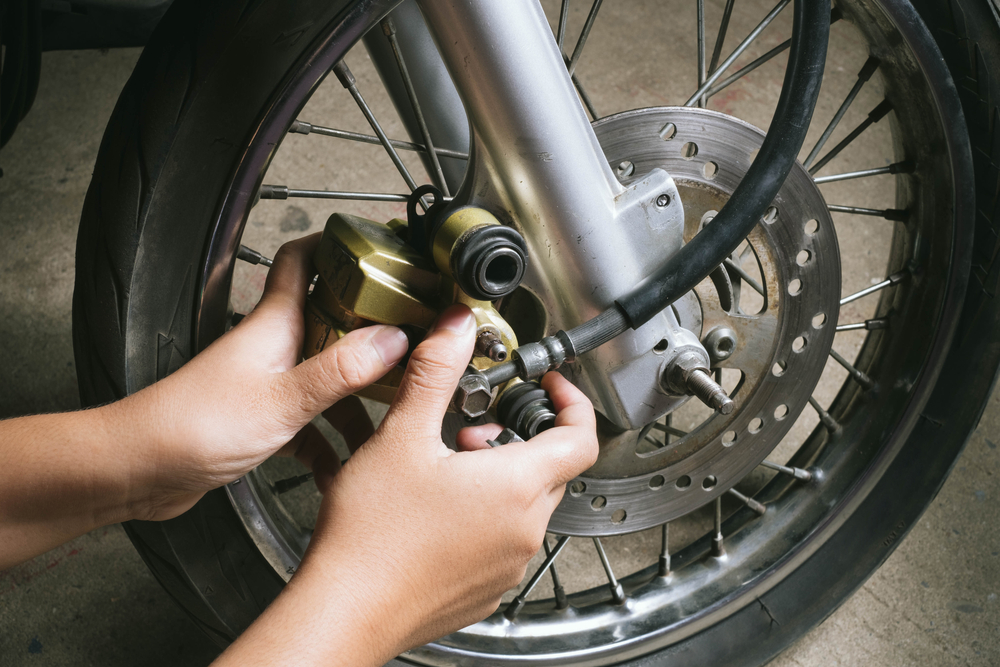
Worn brake pads compromise your stopping power, putting you at risk on the road. Regularly inspect the thickness of your brake pads to ensure they aren’t too worn down. Most pads need replacement when they reach less than 2mm thick. It’s an easy process that can prevent more costly repairs to your braking system. Don’t let worn pads go unchecked, as they can lead to further damage.
Checking and Replacing Air Filters
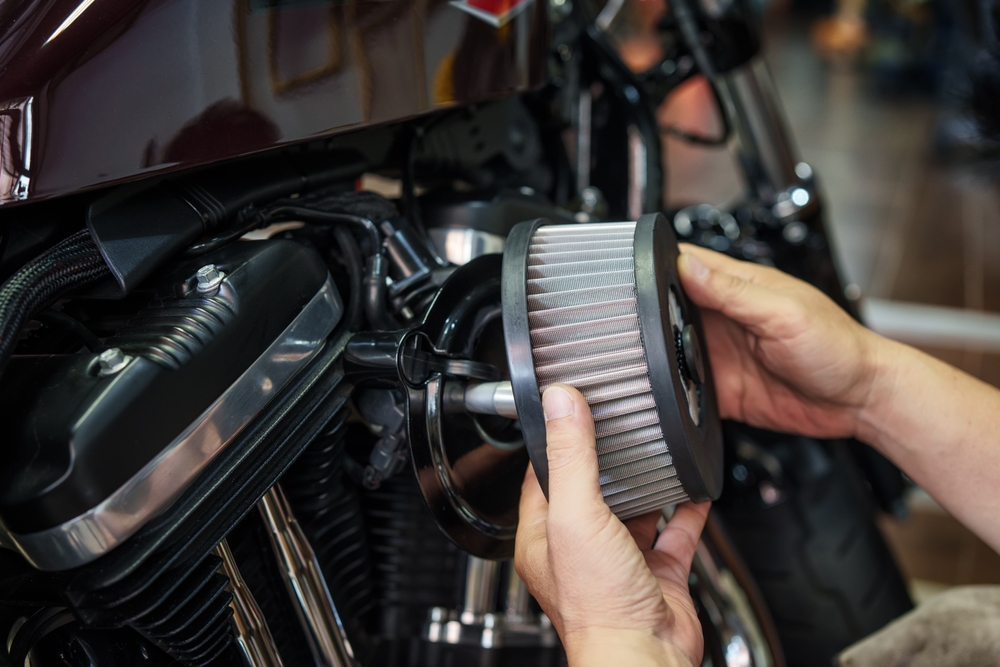
An air filter clogged with dust and debris restricts airflow to your engine, reducing performance and increasing fuel consumption. Checking and replacing your air filter every 10,000-15,000 miles is a straightforward task that improves horsepower and keeps your engine healthy. If you ride in dusty environments, it’s best to inspect it more frequently. A clean air filter ensures your engine breathes easier, leading to a smoother ride.
Checking Coolant Levels
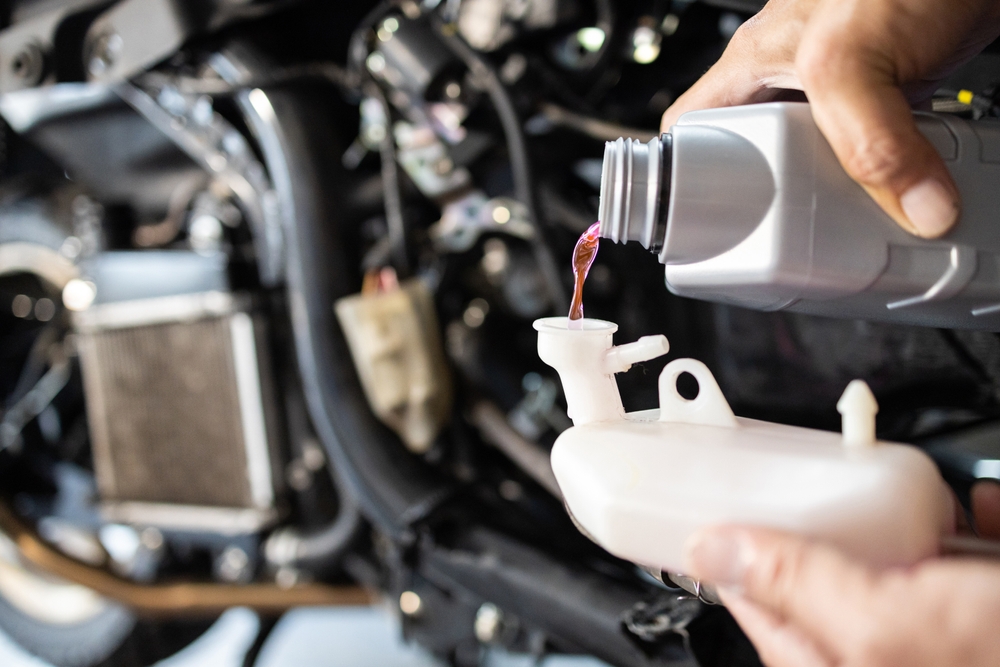
Your engine relies on coolant to regulate temperature and prevent overheating. Low coolant levels can cause significant damage, so it’s important to check the reservoir regularly. If necessary, top off the coolant before long rides or in hot weather. Ensuring that the fluid levels are correct will keep your bike running efficiently and prevent costly engine repairs. Coolant should be changed periodically as well, based on your motorcycle’s service manual.
Battery Maintenance
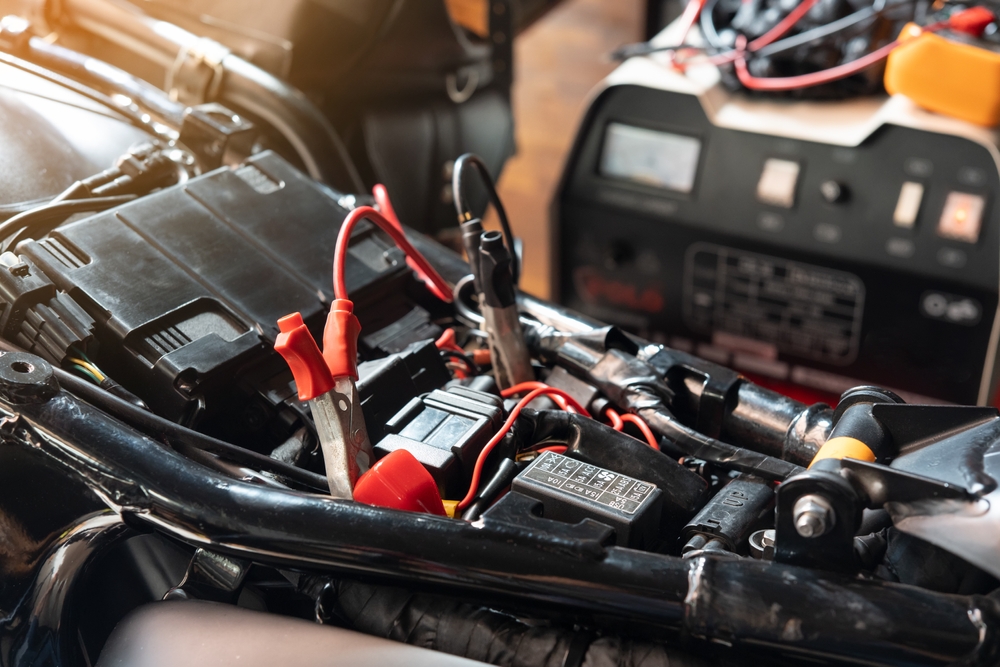
A well-maintained battery is essential for your motorcycle’s electrical system. Inspect the terminals for corrosion and clean them if needed to ensure a strong connection. Using a multimeter to check the battery’s charge will help you know if it needs recharging or replacement. If your bike is stored for extended periods, consider using a trickle charger to maintain battery life. A little attention to the battery can prevent unexpected breakdowns.
Inspecting Spark Plugs
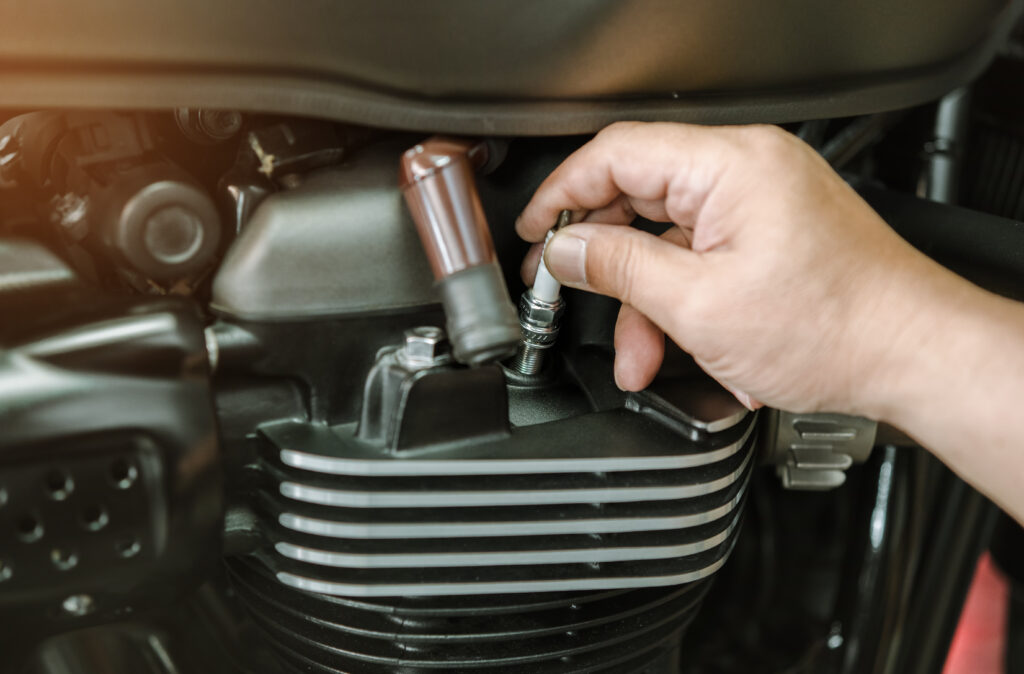
Spark plugs ignite the air-fuel mixture in your engine, so their condition directly impacts performance. Dirty or worn plugs can lead to rough idling, poor fuel efficiency, and difficulty starting. Check and clean or replace spark plugs every 15,000-30,000 miles, depending on the type of riding you do. Keeping spark plugs in good condition ensures optimal combustion, which helps your engine run smoothly. Regular inspection also prevents potential misfires.
Adjusting the Clutch Cable

If your clutch feels too loose or tight, the cable likely needs adjustment. Over time, clutch cables can stretch, affecting your ability to shift gears smoothly. Regularly adjusting the cable ensures you maintain proper clutch tension, improving overall control. It’s a simple task that can be done with basic tools and improves ride quality significantly. Properly adjusted clutches last longer and prevent unnecessary wear on the clutch plates.
Inspecting the Drive Belt or Shaft

The drive belt or shaft transfers power from the engine to the rear wheel. Over time, the belt can wear out or the shaft may require lubrication or inspection. Visual checks for cracks, tears, or signs of wear can prevent sudden breakdowns. This component requires less frequent maintenance than a chain but should still be checked periodically. Early detection of issues can prevent expensive repairs or replacements.
Checking Suspension
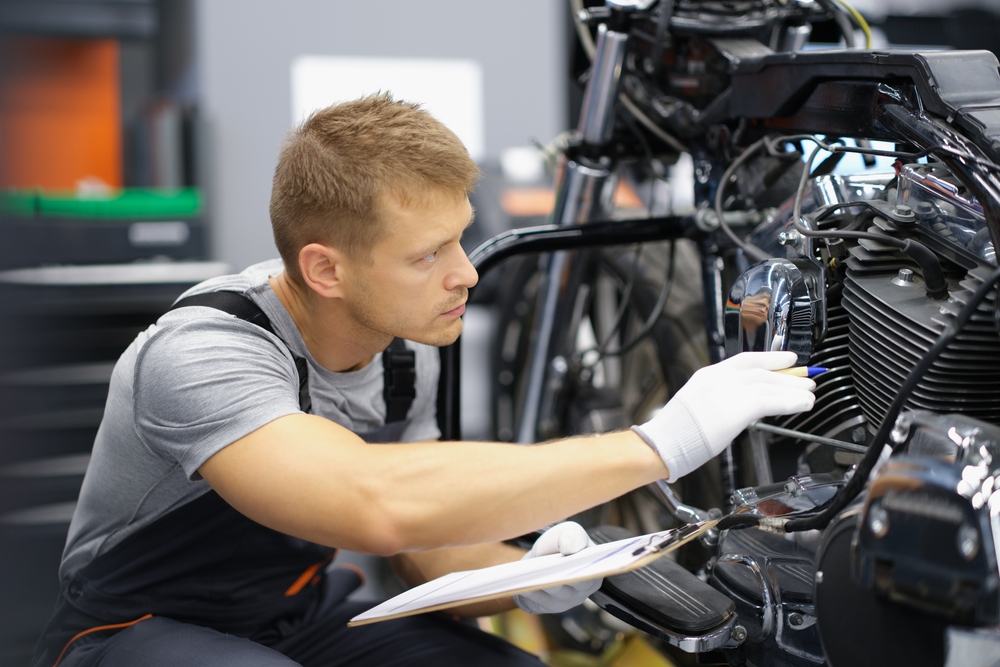
The suspension system is crucial for both comfort and handling. Regularly inspecting the front forks and rear shock absorbers for leaks or damage ensures smooth and safe riding. If you notice any unusual bouncing or instability, adjustments might be necessary. Fine-tuning the suspension according to your weight and riding style enhances comfort and extends the life of your motorcycle’s components.
Cleaning and Adjusting the Carburetor
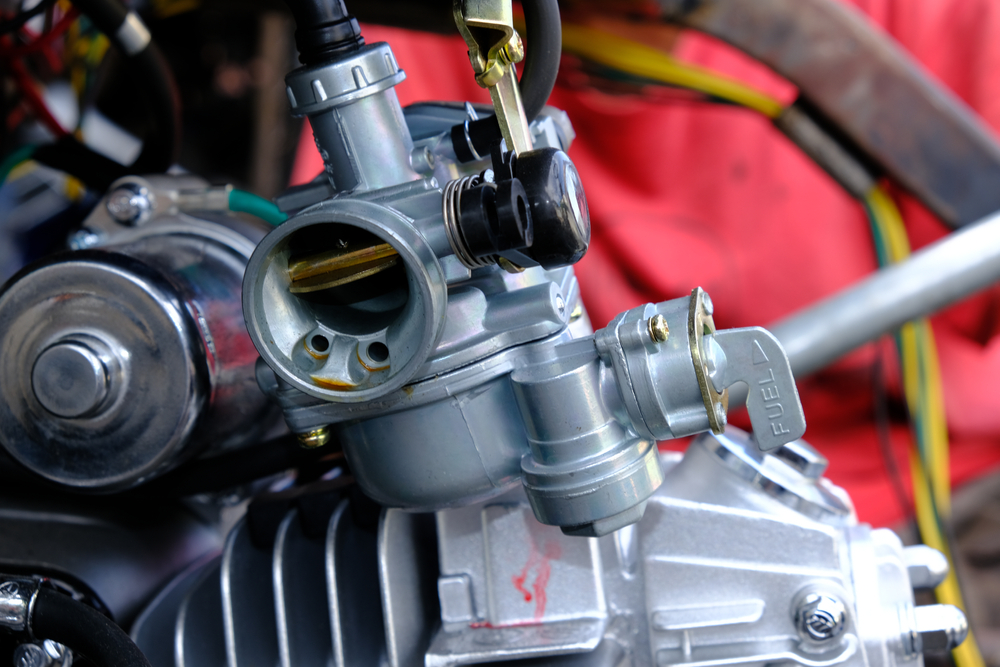
For motorcycles with carburetors, keeping them clean is vital for optimal engine performance. Dirt and debris can clog the jets, causing poor throttle response and fuel inefficiency. Regular cleaning and adjustments can prevent these issues, ensuring smooth acceleration. By maintaining the right air-fuel mixture, you help the engine run at its best. This task may take a little time, but the results are worth the effort.
Inspecting the Exhaust System
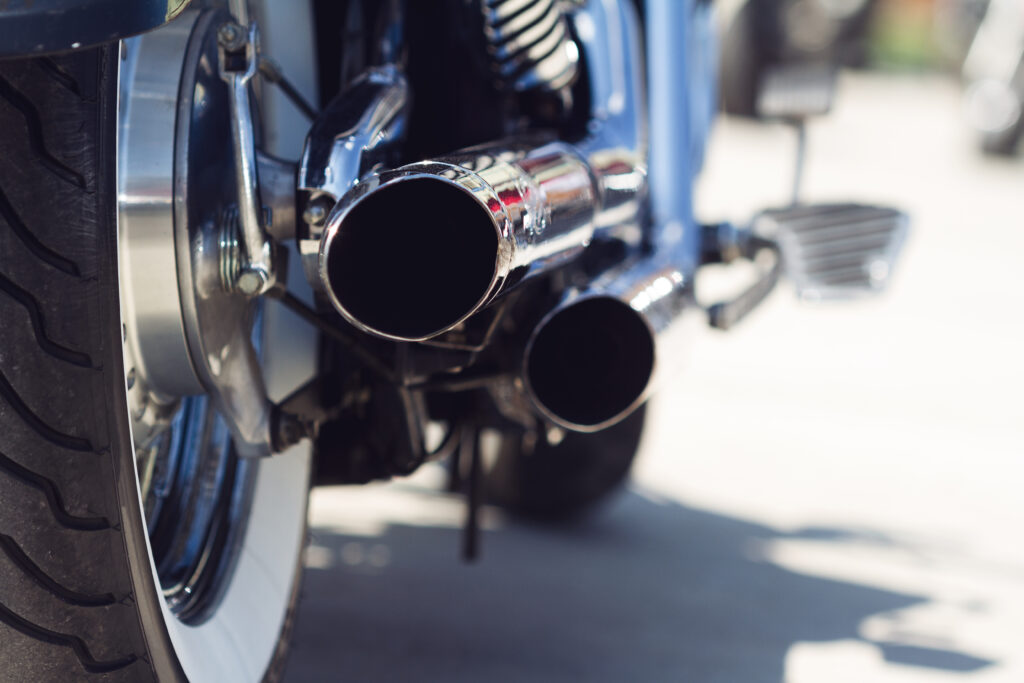
Your motorcycle’s exhaust system should be inspected regularly for rust, cracks, or loose fittings. A faulty exhaust can not only reduce engine performance but also lead to increased noise levels and harmful emissions. By addressing any small issues early, you can avoid more extensive damage down the road. Checking the exhaust system also ensures that your bike complies with noise regulations. A well-maintained exhaust improves both efficiency and sound.
Tightening Loose Bolts and Nuts
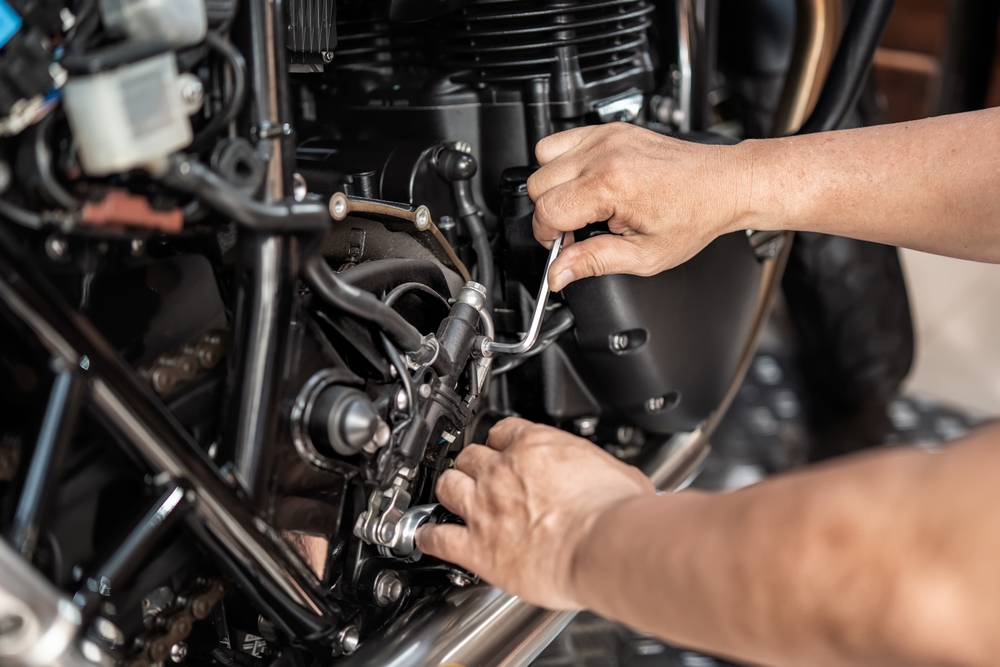
Motorcycles experience a lot of vibrations, which can loosen bolts and nuts over time. Conducting regular checks with a torque wrench to ensure everything is tightened properly is a simple way to prevent problems. Loose components can lead to serious safety hazards if left unchecked. Tightening bolts and nuts is a quick task that can save you from more significant issues on the road. This is especially important after long rides or on rough terrain.
Replacing Brake Fluid
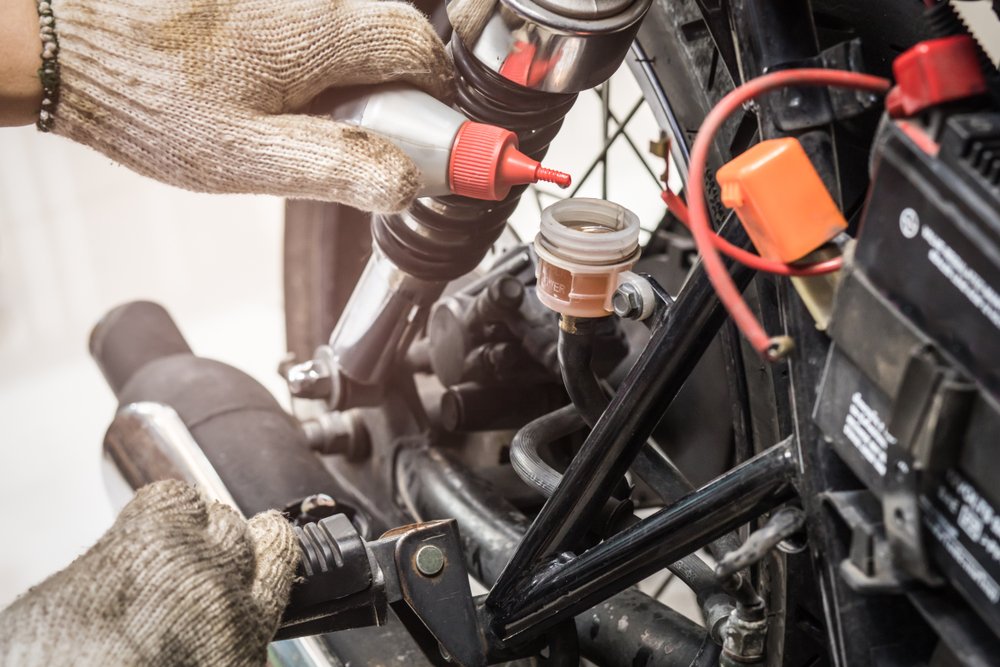
Brake fluid absorbs moisture over time, reducing its effectiveness and potentially leading to brake failure. Flushing and replacing brake fluid every 1-2 years helps maintain optimal braking performance. It’s a straightforward task that can be done at home, ensuring your brakes remain responsive. Properly maintained brake fluid prevents overheating during intense use, such as riding in hilly or mountainous terrain. This small task plays a big role in your overall safety.
Cleaning and Polishing

Cleaning your motorcycle regularly not only keeps it looking great but also helps identify potential issues like oil leaks, rust, or wear. Use appropriate cleaning products to prevent damage to the paint and components. A clean bike runs cooler, and removing dirt buildup prevents long-term damage. Polishing metal parts adds an extra layer of protection against corrosion. Regular cleaning can also enhance your bike’s resale value.
Checking and Replacing Headlights and Indicators
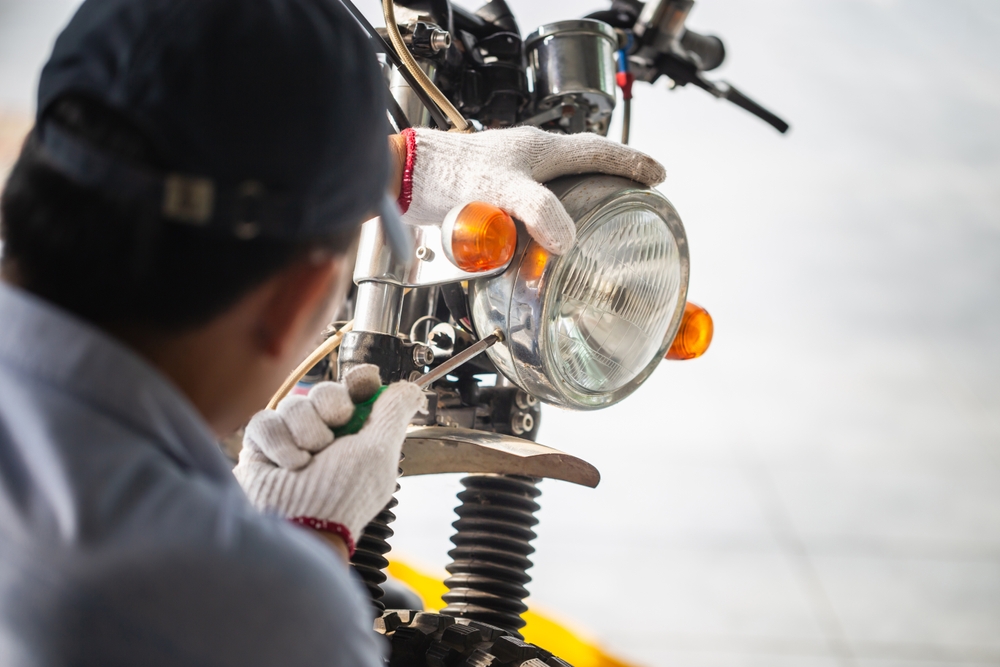
Working headlights and indicators are essential for visibility and communication on the road. Regularly inspecting them for functionality ensures that other drivers can see you, especially in low-light conditions. Replacing burnt-out bulbs is a quick and inexpensive task that significantly improves your safety. Keeping your lights in good working order also helps you avoid traffic violations. Don’t forget to check both the front and rear indicators regularly.
This article originally appeared in MyCarMakesNoise.
More from MyCarMakesNoise
McLaren’s 17 Most Powerful Road Cars and Their Formula 1 Heritage

McLaren has a rich history in both road cars and Formula 1, with each influencing the other in remarkable ways. This article explores 17 of McLaren’s most powerful road cars, highlighting how their design and engineering are rooted in the brand’s legendary Formula 1 heritage. Read More.
15 Beautifully Crafted Vintage Trains with Timeless Appeal

There’s something undeniably captivating about vintage trains—their craftsmanship, elegance, and the stories they carry through time. These beautifully crafted locomotives have not only shaped the history of travel but continue to evoke a sense of nostalgia and wonder. Read More.
20 Bizarre Racecars You Won’t Believe Actually Exist
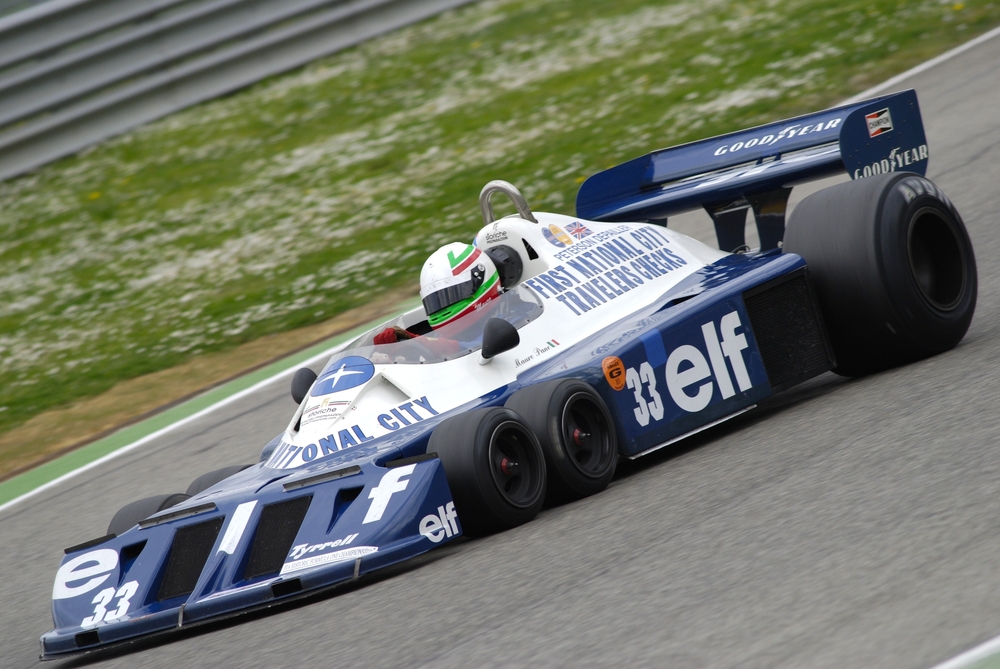
Racecars are often built for speed and performance, but some designs are downright bizarre. These unconventional vehicles push the boundaries of aerodynamics and engineering, resulting in some truly strange appearances. Read More.

